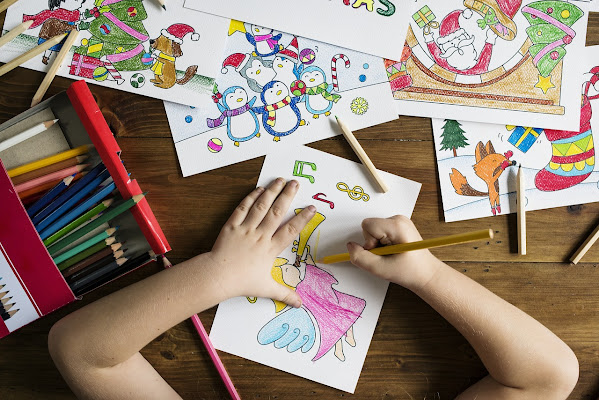What is Drawing in Art?
Art drawing is a fundamental form of artistic expression that involves creating images, shapes, or representations using various drawing tools such as pencils, charcoal, ink, or digital mediums. It serves as the foundation of visual arts and allows artists to communicate emotions, ideas, and stories through lines, shading, and composition.
Aztec art featured intricate stone carvings, colourful murals, and symbolic codices depicting gods, warriors, and daily life with vibrant detail.
Types of Art Drawing
Art drawings can be classified into several types, including:
• Sketching — Quick, freehand drawings that capture basic shapes and ideas.
• Illustrations — Detailed drawings used in books, advertisements, and media.
• Portraits — Representations of people, capturing their likeness and emotions.
• Abstract Drawing — Non-representational works that focus on forms, patterns, and emotions.
• Technical Drawing — Precise drawings used in engineering, architecture, and design.
Figurative art represents real-world subjects, focusing on human and animal forms through painting, sculpture, and drawing with expressive detail.
Importance of Art Drawing
Art drawing is essential for personal expression, creativity, and even professional fields. It fosters observational skills, improves hand-eye coordination, and serves as a tool for learning and exploration. Whether used for storytelling, design, or therapeutic purposes, art drawing remains a crucial aspect of the artistic world.
Latte art is the creative pouring of steamed milk into espresso, forming intricate patterns like hearts, rosettas, and tulips.
How is Art So Important?
Art has been an integral part of human civilization for centuries, shaping cultures, inspiring individuals, and expressing emotions beyond words. It transcends language, societal boundaries, and even time itself. Whether in the form of painting, music, literature, dance, or digital creations, art plays a crucial role in shaping our world.
Form in art refers to three-dimensional shapes, adding depth and volume through shading, perspective, and sculptural techniques in various mediums.
But why is art so important? Here are some compelling reasons why art holds immense value in our lives.
1. A Medium for Expression and Communication
One of the most powerful aspects of art is its ability to convey thoughts, emotions, and messages in ways that words often cannot. Through paintings, sculptures, poetry, or film, artists communicate deep feelings, cultural narratives, and historical events.
Art provides a voice to the voiceless, allowing individuals to share their perspectives, struggles, and dreams with the world. Art the Clown is a sinister, mute character from the Terrifier horror films, known for his eerie grin and brutal killings.
2. Cultural Preservation and Identity
Art is a reflection of culture and heritage. It captures traditions, rituals, and values that define societies. Through various artistic expressions, cultures preserve their histories, allowing future generations to learn and appreciate their roots.
Indigenous art, folk music, and traditional dance forms are excellent examples of how art maintains a society’s identity while fostering a sense of belonging.
3. Encouraging Creativity and Innovation
Art fuels creativity, which is essential for problem-solving and innovation in various fields. The ability to think outside the box, imagine possibilities, and create new solutions is a skill that transcends artistic disciplines and is crucial in fields like technology, science, and business.
Many groundbreaking ideas stem from the creativity nurtured through artistic endeavors. Rock painting is an ancient and modern art form, using natural or acrylic paints to create designs, symbols, and vibrant imagery on stones.
4. Emotional and Psychological Well-being
Engaging with art — whether by creating it or simply appreciating it — has been proven to have profound effects on mental health. Art therapy is widely used to help people cope with stress, anxiety, and trauma. Painting, playing music, or even journaling can be therapeutic, offering an outlet for emotions and fostering a sense of fulfilment.
5. Social and Political Impact
Throughout history, art has played a pivotal role in social movements and political change. From protest songs to revolutionary murals, art has been used to challenge oppression, advocate for rights, and inspire societal progress.
Artists like Pablo Picasso, Frida Kahlo, and Banksy have created powerful pieces that address social issues and provoke thought. Acrylic painting uses fast-drying, water-based paints to create vibrant, versatile artworks on canvas, wood, or paper with rich textures.
6. Economic and Educational Contributions
The art industry significantly contributes to the global economy. The film industry, music industry, fashion, and visual arts generate billions of dollars annually, creating employment opportunities for millions.
Moreover, incorporating arts into education enhances critical thinking, problem-solving skills, and emotional intelligence in students, making them well-rounded individuals.
7. Aesthetic and Spiritual Value
Beyond its functional and societal roles, art brings beauty into the world. It enriches our lives with visual and auditory pleasures, evoking emotions that transcend the mundane aspects of daily life.
Many people also find spiritual fulfilment in art, whether through religious paintings, sacred music, or meditative practices like mandala drawing. The most expensive painting in the world is Salvator Mundi by Leonardo da Vinci, sold for $450.3 million in 2017.
Conclusion
Art is not just a luxury or a pastime — it is a necessity. It shapes identities, encourages creativity, fosters emotional well-being, influences society, and contributes to economic and educational development. The importance of art cannot be overstated, as it is deeply intertwined with the human experience.
Whether through personal expression, cultural preservation, or social change, art remains a vital force that continues to shape the world we live in. Balance in art creates visual harmony by distributing elements evenly, using symmetry, asymmetry, or radial techniques for aesthetic stability and appeal.




Comments
Post a Comment